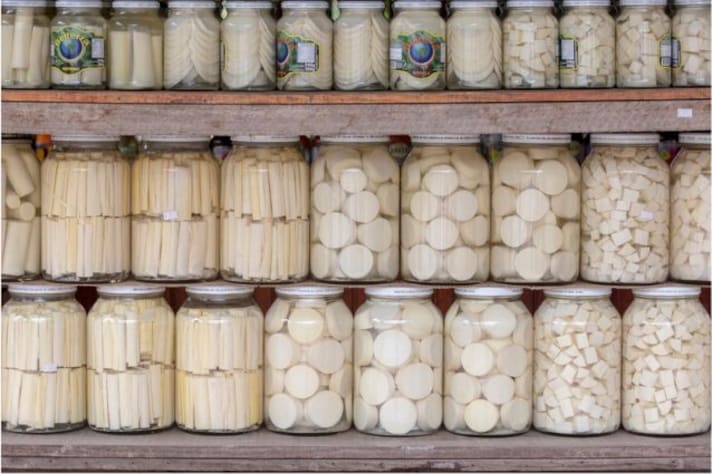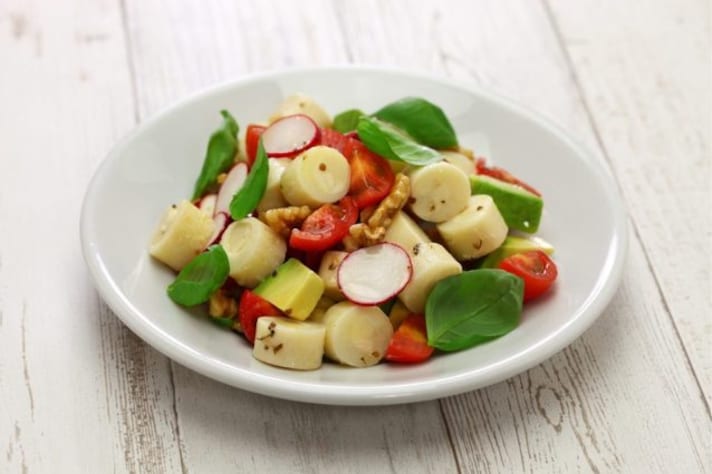
It is a small offshoot obtained from some types of palm, with a delicate flavor but very high nutritional properties: it is palmito, or, as the English word explains, “heart of palm”, a very common food in kitchens all over the world but still kind of a mystery in the US. Thanks to its flavor and its characteristics, palmito is very versatile in the kitchen, both eaten alone and used in various cooked recipes, but then why is it not so well known in all parts of the world? In addition to being a typically South American ingredient (but not only: it is also found in tropical countries), the problem is in its considerable ecological impact.
The plants from which palmito was obtained were spontaneous, but the great demand for the product led Brazil (the world's largest producer of palmito) to start plantations intended only for its production, becoming however the cause of deforestation of large slices of the Amazon forest. Not only that: cultivation also involves a certain waste, because from a tree even 20 meters tall you can obtain about 1 kg of palmito and some species of palms, after extraction, end up dying.
Palmito is therefore not a product that helps the planet, which is why we invite you to purchase it consciously and making sure that they are products certified by the Ministry of Health and by Ibama, the Brazilian Institute of the Environment and Renewable Natural Resources, which ensures an ecological and sustainable origin.

What is Palmito – of Heart of Palm?
Palmito is a vegetable food of South American origin, a shoot that is obtained from the internal trunk of some varieties of palm trees that grow spontaneously (hence the nickname “heart” of palm), including coconut, açaì, juçara and chontaduro. They are plants that are mostly typical of South America, particularly Brazil, Ecuador and Paraguay, although coconut also falls into this category, which is why palmito is also found in the cuisines of tropical countries.
Palmito is extracted by hand due to the extreme delicacy of the plants from which it is obtained and is usually consumed fresh in the countries of origin; in the West, however, it is sold packaged in glass jars and placed under salted water. Palmito is appreciated for its very delicate taste, but also for its great nutritional contribution: it is rich in fiber, potassium, iron, zinc, calcium, phosphorus, copper, vitamin B2, vitamin B6 and vitamin C.

Over time, as mentioned in the introduction, the agricultural industry has domesticated the wild plants from which palmito is extracted, adapting them to controlled cultivation with a series of problematic ecological consequences. We reiterate that, if you want to try palmito, it is best to only buy products with recognized sustainability certification.
How to Use Palmito in Cooking
Palmito has a sweet flavor, it is delicate and light, with a taste that recalls the flavor of white asparagus. Precisely for this reason it is very versatile in the kitchen, even if in the West it is not found fresh but preserved in brine. Despite this you can use it both raw, adding it for example to mixed salads, and you can also use it cooked, for example au gratin in the oven enriched with béchamel sauce. You can also bread the palmito with parmesan and breadcrumbs and fry it or bake it in the oven, or you can empty it and use it as a container in which to insert various fillings. Remember that, to use it in this type of cooked recipes, you must always drain it well from the preserving liquid and then blanch it on the stove for 5 minutes.

;Resize,width=767;)
